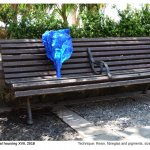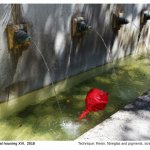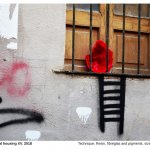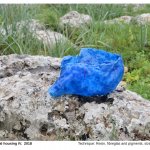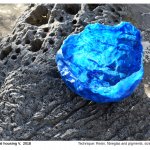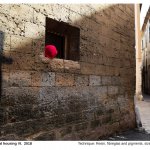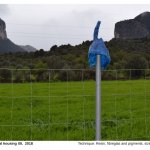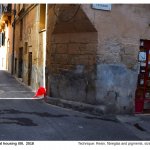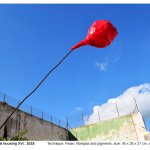iLlegal housing 2018 / first thoughts, June 2018
It’s all about space, public space.
I. Every time I pass my sculptures in the light of dusk I ask myself, who has turned on the light there? Who has just come home? Who lives there, in these sculptures? Is it possible to live in sculptures at all? Is it legal to live in a sculpture? Is it possible to survive in a sculpture?
II. Housing https://en.wikipedia.org/wiki/Housing Housing refers to houses or buildings collectively; accommodation of people; planning or provision of accommodation by an authority; and related meanings.[1] The social issue is of ensuring that members of society have a home in which to live, whether this is a house, or some other kind of dwelling, lodging, or shelter. The term informal housing can include any form of shelter or settlement (or lack thereof) which is illegal, falls outside of government control or regulation, or is not afforded protection by the state.
As such, the informal housing industry is part of the informel sector[4] To have informal housing status is to exist in ‘a state of deregulation, one where the ownership, use, and purpose of land cannot be fixed and mapped according to any prescribed set of regulations or the law.
III. I can not differentiate exactly in this context, do I speak of humans or of sculptures? Do I tell of places where people can live or do I speak about places that are built for living but are kept empty and living in these is prohibited.
IV. I’m talking about everything. My sculptures tell about everything. All points can be summarized in one point, in the point where all these thoughts meet. People call this point social misery. It does not matter if we talk about the problems in the big cities of Europe, in the USA, Asia or Africa. The miserable and unacceptable life situations are the same everywhere and nobody seems capable or willing to eliminate these problems.
V. My sculptures describe the social aspect. They face these misery and draw attention to these unbearable social problems. My sculptures are installations. They exist. They are in the middle of the action and open existing space to be rediscovered. They are in places that are not normally intended for sculptures.
They stand on the edge and form the center. They stand or lie in the room, in niches and corners and sit on chairs. They are where they are not expected by anyone. They are in the private, in the public space, on the meadow, in the park, in the trees, hover in the air or swim on the water.
They sensitize for a different side of life. My installation create a stage of life, describe a play in which we are all involved but no one wants to play a part or be responsible.
I create the sculptures in their space, place it, take a foto and leave the sculpture to it’s own lives. Sometimes when the sculptures has disappeared I lay down this photo of the sculpture in the room at the same place and take another picture. The picture in the picture, the memory of the sculpture in the room on the photo of the picture inside the picture with the sculpture in the room on the image of the picture inside the image. Sometimes I just draw on the photo of the sculpture in the room. Memories of this moment that was once or how it could be, that moment with the sculpture or the drawing in the space…
A historical document, a current event, a story of the memory and transformation and life in other places. A narration of the knowledge one does not see everything that exists and things exist we can not even see.
Every time I pass my sculptures in the light of dawn I ask myself, who has turned on the light there? Who has just come home? Who lives there, in these sculptures?
Is it possible to live in sculptures at all?
